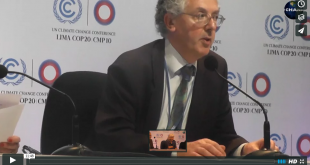This video sees Dr Ali Omar monitoring air quality from space.
What is air quality? “Air quality” refers to the condition of the air within our surrounding. Good air quality pertains to the degree which the air is clean, clear and free from pollutants such as smoke, dust and smog among other gaseous impurities in the air. Air quality is determined by assessing a variety of pollution indicators. Good air quality is a requirement for preserving the exquisite balance of life on earth for humans, plants, animals and natural resources. As such, human health, plants, animals and natural resources are threatened when pollution in the air reach high concentrations.
There was a project that “predicted zoonotic hemorrhagic fever events using Nasa earth science data” helped to show the rift valley and ebola movements using scientific data. The project was very insightful and is worth watching. The speaker also takes us through projects that show the movement of malaria and how it has developed.
The speaker also shows a map of nitrous oxide and how it has spread across America but with certain big amounts of it concentrated in certain states. There is also data on how in certain parts of the United States there are severe damages to the ozone. The links to the Nasa experiment is in the links below. In 2007, a Space Act Agreement between NASA Ames Research Center and H211, LLC began a relationship that ultimately led to the formation of the Alpha Jet Atmospheric eXperiment (AJAX). Science measurement flights began in 2011 and AJAX is currently performing regular missions to measure ozone, formaldehyde, carbon dioxide (CO2), methane (CH4) and meteorological data over California and Nevada.
Unlike most NASA atmospheric airborne research missions, NASA’s flexible relationship with the aircraft provider allows Ames Research Centre to collect data on a regular basis over multiple seasons, which complements surface and tower-based observations collected elsewhere in the region. It also allows AJAX to provide validation data for satellite sensors over months and years, to help assess the sensor health and calibration over its lifetime.
This video discusses many topics, projects, agreements and developments regarding how the air has changed around the world. It is obvious that the quality of air will decrease in line with population but it just means we must invest and use more effective climate helping technologies. India for example has become the second largest emitter of sulfur dioxide and this is shown on a table within the video.
If you want inside knowledge on how the equality of the air around the world is changing then this video is worth watching. Moreover you can get some empirical evidence to support any changing arguments you may be trying to make.
Links: https://airquality.gsfc.nasa.gov/ , https://www.nasa.gov/centers/ames/earthscience/programs/ajax , http://www.who.int/mediacentre/news/releases/2016/air-pollution-rising/en/
By Alex Mitchison
 Mother Channel Environmental, climate change news and media.
Mother Channel Environmental, climate change news and media.



